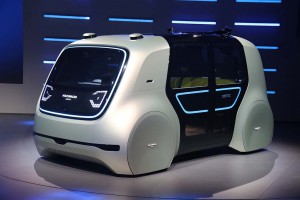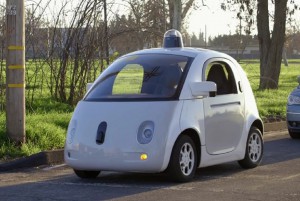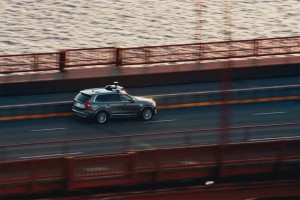
VW's new Cedric prototype robotic car is an autonomous vehicle that is voice-controlled by using a fob the size of a jump drive.
If California’s regulators move ahead with a new proposal, completely driverless vehicles – many not even offering back-up controls for a human to grab in an emergency – could be prowling the state’s roadways before the end of 2017.
California was one of the first states to approve the testing of autonomous vehicles, though it required each car to have a back-up “operator” to be at the ready in an emergency. The rules proposed by the state’s Department of Motor Vehicles would go the next step.
Many experts now believe that completely driverless vehicles should be the auto industry’s ultimate goal, officials at Ford Motor Co., among others, warning that humans can’t be relied upon to take over if something goes wrong, especially after hours of sitting behind the wheel with nothing to do.
(Waymo sues Uber for alleged IP theft in autonomous program. Click Here for the latest.)
A number of manufacturers have been showing off driverless prototypes in recent months. Waymo, the autonomous vehicle unit of Google, has developed a version of its little pod car without steering wheel or other controls. The company, considered one of the leaders in the technology, has long argued that fully driverless vehicles would be the safest approach.
Volkswagen, meanwhile, revealed a completely driverless prototype at the Geneva Motor Show last week dubbed Sedric. The toaster-shaped vehicle would be used for ride-sharing services and summoned by the tap of a special fob, or through a smartphone app.

One of Waymo's bubble cars, which currently comes with a backup driver — but no backup controls, just a button to shut it down.
Officials with ride-sharing services Lyft and Uber, have similar concepts in mind, and they contend that, by eliminating drivers, the cost of a ride would drop so sharply it would be cheaper to flag a ride than to own a private automobile.
“We want to get this right,” Bernard Soriano, an official with the California Department of Motor Vehicles, said when announcing the plans. He cautioned that the precise timing for enacting the revisions is uncertain because, “We don’t want to race to meet a deadline.”
(Meet VW’s robot car, Sedric. Click Here.)
A total of 27 different companies have now registered with the DMV to test autonomous vehicles in California. For now, all are required to have trained operators at the ready. The latest to get a permit is Uber. The ride-sharing giant launched a pilot program in San Francisco last December but declined to get the necessary permit. It quickly pulled the project when the state revoked the registrations of its modified Volvo XC90 SUVs. Uber last week returned to the state, this time submitting the necessary paperwork.
There is a broad consensus that some form of autonomous technology will go into retail production by the early part of the coming decade. Until recently, it was generally expected that manufacturers would slowly ramp up from limited self-driving capabilities until they were ready to go completely driverless. That process was generally expected to take a decade or more of evolution.
But last year, Ford announced it would skip directly to full driverless capabilities – setting a target date of 2021. Raj Nair, the automaker’s global product development director, told TheDetroitBureau.com that Ford did not believe humans could be trusted to respond correctly in an emergency after spending hours texting, napping or otherwise being distracted.
But not everyone is quite so confident in the ability of automated vehicles to completely handle any and every emergency.
John Simpson, head of the non-profit Consumer Watchdog, warned that California regulators are ” being seduced by the hype from the self-driving car developers. Simpson added his fear that the state is “rolling back…sensible safety provisions.”
Proponents of fully driverless vehicles contend that the technology would not only eliminate most highway fatalities but also open up a new era of mobility for the handicapped. Last year, Waymo demonstrated that potential by giving a ride to a blind man in the tech-savvy community of Austin, Texas.
(Uber’s autonomous vehicles are headed back to California. Click Here to see what’s next.)
A growing number of states have enacted regulations covering various levels of autonomous technologies. Others, including Texas, have ruled that existing rules permit such testing. Federal regulators announced the first nationwide guidelines during the final weeks of the Obama Administration. Congress and the National Highway Traffic Safety Administration are being asked by the industry to update those rules to allow for fully driverless vehicles.


Driverless cars are safer, but the exact picture will appear after its use. California is going to test this and it,s great to make human more lazier.